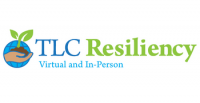By Robert Goldman, Psy.D., J.D. and Jaclyn Gordon
What is psychological safety and why do we need it now?
The world is different than it was before the COVID-19 pandemic, as we all know. Personally, we also may have changed our opinions and values regarding certain issues, particularly physical space with others. What we are comfortable with, or our boundaries may be different now than they were before March of 2020. With many companies and workers returning to offices, whether it be full-time or hybrid models, there are bound to be many difficult social nuances to navigate.
Determining our boundaries, especially with coworkers, will be a collective challenge we will all face in the near future. How can we create an environment where re-setting boundaries are accepted and respected? A place of open conversation. Fostering an environment of psychological safety is critical.
This will be especially challenging in the coming months. We are now faced with re-examining our boundaries, our values, and what we are comfortable with moving forward. For example, do you want to shake hands with people you meet at a dinner party? The answer to this question may be different for you today than it was a year ago, and that is okay.
Some questions we may find ourselves asking include:
“What greeting is this person comfortable with?”
“Have handshakes ever even been sanitary?”
“Should I still wear a mask when I run into the store, the employees still are?”
“I used to give this person a hug when I saw them, what do I do now?”
“What if these people are not vaccinated?”
How are we to navigate the different challenges, opinions, and levels of comfort? How can we avoid conflict, foster trust between colleagues, and prevent uncomfortable situations? Fostering an environment of psychological safety can be a great place to start.
Psychological safety refers to a climate where all individuals feel comfortable expressing themselves, without fear of judgment or backlash. Studies have shown that workplaces that create a climate of psychological safety have employees that trust their superiors more and are overall happier. Psychologically safe environments promote speaking up, sharing opinions, and collaboration without fear. When we do not feel comfortable and fear being judged, we are less likely to ask for help or set boundaries when we need to. This can lead to a decrease in overall well-being, and even increase the likelihood of burnout.
We work best when we work together. Working together in the current climate will also mean learning each other’s boundaries and comfort levels. It is through connection and open conversation that we can build psychological safety in the workplace. Here is a short and incomplete list of ways to help your team and employees feel comfortable expressing themselves when returning to the office:
- Ask for feedback and ideas about safe ways to return to the workplace
There is no way to find out what is working and not working for individuals if it is not openly discussed. Asking others how they feel as opposed to simply creating rules based on one or a small number of people’s opinions and comfort is not enough. - Stay true to your word
Studies have shown that when leaders in the workplace actions align with what they say, employees are more likely to trust them and feel more secure in the workplace. - Be open and respectful to different opinions
Everyone is a valuable member of the team, meaning that everyone’s voice is important. Make an effort to not judge and understand that others’ feelings are valid. Communication skills such as nonviolent communication can be a helpful tool to use. - Take time to really listen, be present, and engaged
When other people receive nonverbal cues that others are listening to them, they feel respected and will feel more comfortable being open and honest. - Create a system that works for everyone
Some creative ideas have worked in some workplaces, such as using color-coded wristbands that indicate whether someone is comfortable with a hug, handshake, or neither. - Give support when needed
Workers are coming from a variety of changes that happened over the last year during the pandemic. Being flexible and understanding with workers as they adjust themselves and their families to going back to work will be necessary.
In summary, setting new boundaries will be essential to adapting to life after the pandemic and protecting our mental health. There are ways to help ourselves and others around us feel comfortable and accepted, regardless of what we are comfortable with. Psychological safety is a great way to help everyone in the workplace feel connected, safe, and respected. It is also helpful long-term in creating effective teams.
—Jaclyn Gordon is a fourth-year doctoral student in Hofstra University’s School-Community Psy.D. program.

